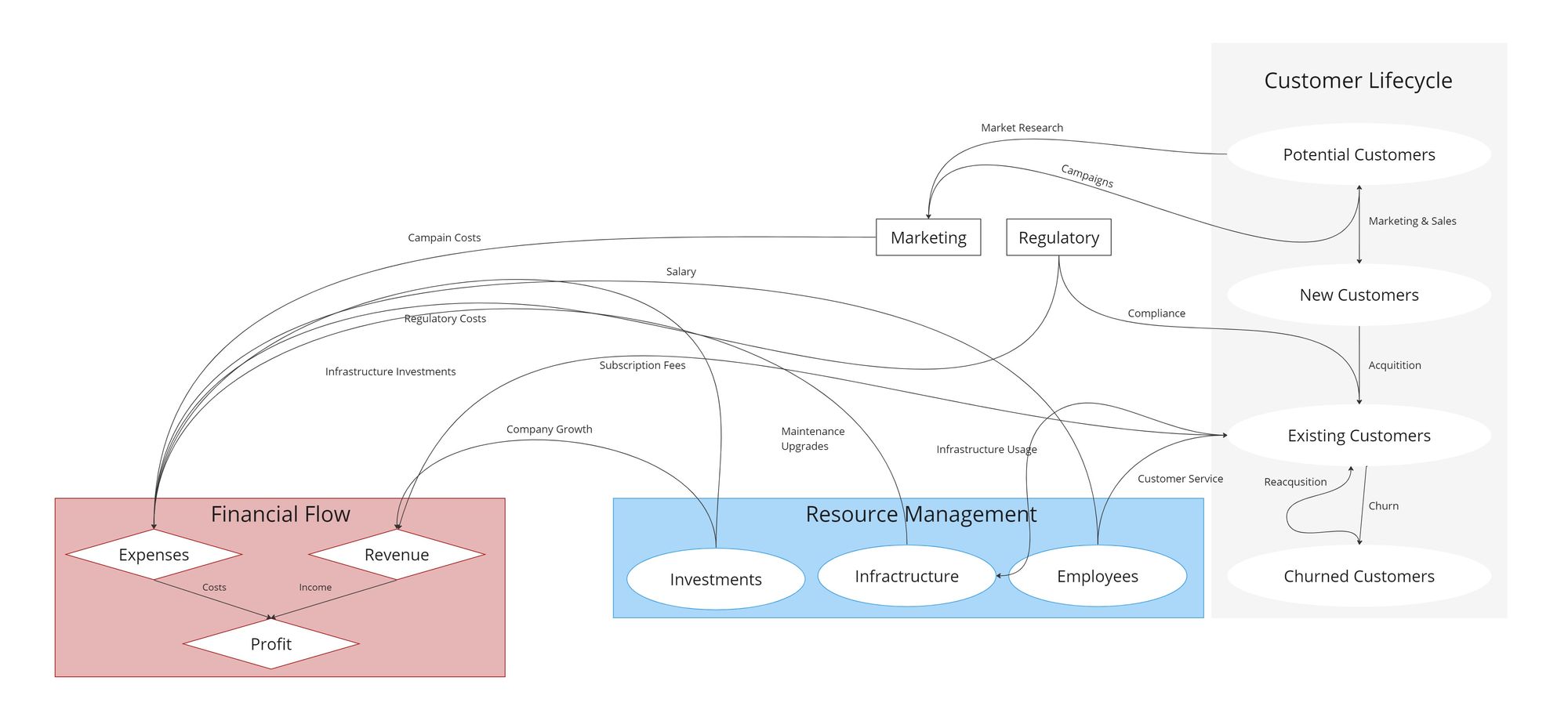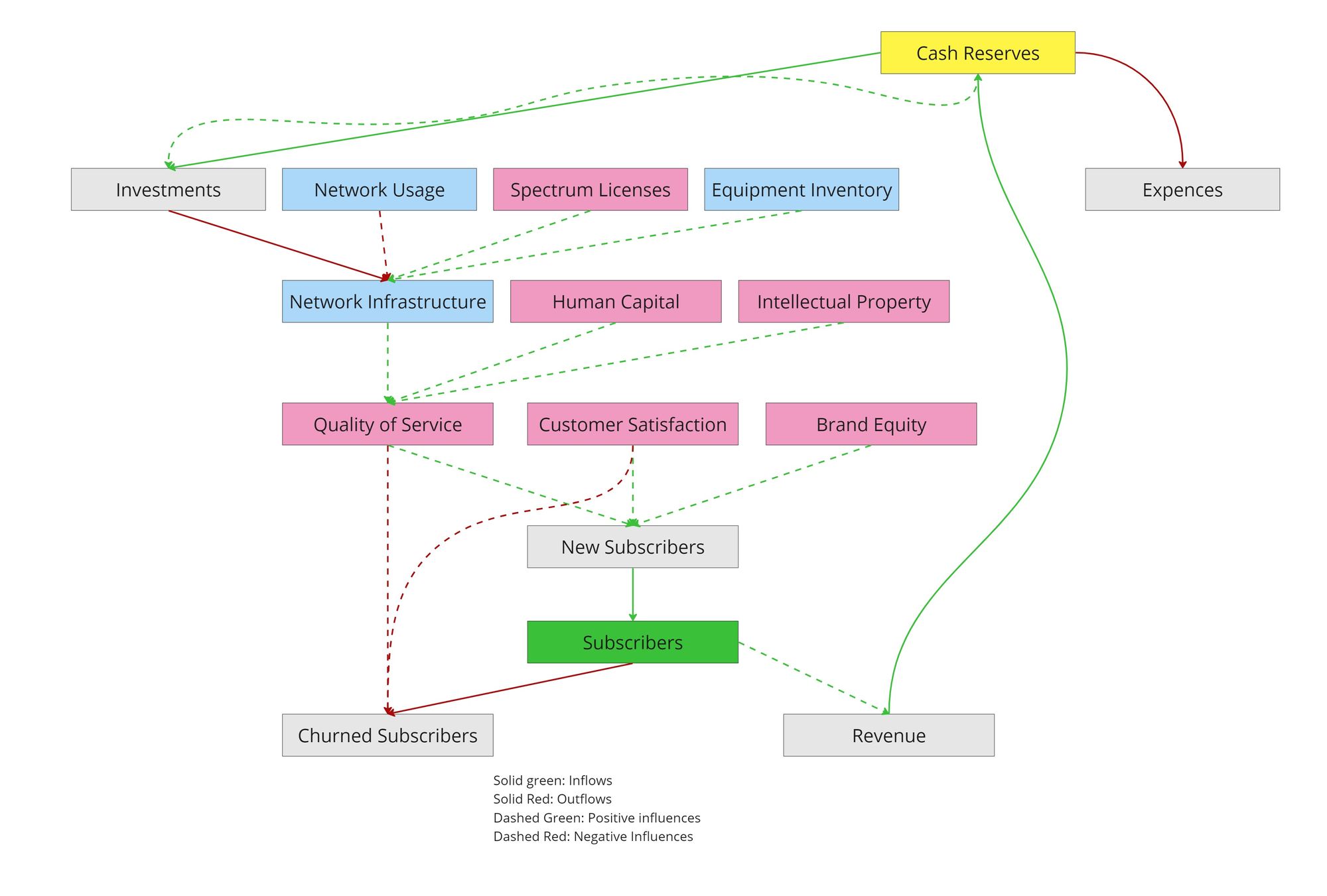Leveraging Feedback Loops for Organizational Design

In today's dynamic and complex business environment, organizations are continually striving to achieve their strategic ambitions. To successfully navigate this landscape, companies need to align their organizational structure with their long-term goals. This is where system dynamics modeling feedback loops comes into play, offering a powerful tool for optimizing organizational design. In this blog post, we will explore how to leverage feedback loops to inform and guide the process of organizational design, focusing on practical steps and considerations.
Understanding System Dynamics Modeling:
System dynamics modeling is a holistic approach that examines the dynamic relationships and feedback loops within complex systems. It allows organizations to simulate and understand the behavior of these systems over time.
While having a detailed system dynamics model can provide a more comprehensive understanding of the organizational system, it is not always necessary to delve into intricate details, especially when it comes to understanding feedback loops. Understanding feedback loops is indeed a crucial aspect of system dynamics modeling and can yield valuable insights for optimizing organizational design.

Practical steps and considerations when levaraging feedback loops:
- Define Strategic Ambitions: To begin, clearly articulate the strategic ambitions of the organization. This involves identifying the key objectives, goals, and outcomes the organization aims to achieve. By establishing a strategic foundation, you can better align feedback loops and design decisions with these ambitions.
- Identify Key Variables: Next, identify the key variables within the organizational system. These variables can encompass various aspects such as market demand, internal processes, human capital, resources, and technology. Understanding the cause-and-effect relationships between these variables is crucial for effective organizational design.
- Identify and Analyze Feedback Loops: Explore the feedback loops within the organizational system. Feedback loops can be reinforcing or balancing in nature, influencing the system's behavior over time. Identify the key feedback loops that significantly impact the organization's performance and strategic ambitions. For example, consider how changes in employee satisfaction may influence productivity, which in turn affects customer satisfaction and market demand.
- Visualize Feedback Loops: Visualizing feedback loops helps in comprehending their structure and dynamics. Causal loop diagrams are commonly used for this purpose. These diagrams illustrate the relationships between variables and the direction of influence, allowing stakeholders to visualize the loops and understand how changes in one variable can propagate through the system. Use this visualization to identify critical loops that require attention during organizational design.
- Determine Leverage Points: Leverage points are specific areas within the feedback loops where interventions can yield significant impacts on the system's behavior. Identify leverage points by analyzing the strength and influence of feedback loops. Focus on identifying opportunities to reinforce positive feedback loops or break detrimental ones. For example, strengthening the loop between employee development and productivity can have cascading effects on organizational performance.
- Define Design Principles: Based on the insights gained from feedback loops and leverage points, establish design principles. Design principles provide guidelines and criteria for making design decisions. For instance, principles such as "promoting cross-functional collaboration" or "emphasizing customer-centricity" can drive specific design choices. These principles ensure consistency and alignment with the organization's strategic ambitions.
- Iterate and Test: Organizational design is an iterative process. Develop prototypes or pilot initiatives to test and validate the proposed design choices. Monitor the impact of these interventions on the identified feedback loops and desired outcomes. This iterative approach allows for fine-tuning the organizational design based on real-world feedback and learning.
- Incorporate Continuous Feedback: Create mechanisms to gather feedback and data on the effectiveness of the organizational design. Regularly assess whether the design is aligned with the strategic ambitions and delivering the desired outcomes. Solicit input from employees, customers, and stakeholders to identify areas for improvement and make necessary adjustments.

Leveraging feedback loops is a powerful approach to inform and guide organizational design from scratch. By understanding the dynamics and relationships between variables, organizations can identify critical feedback loops, leverage points, and design principles that align with their strategic ambitions. By taking a holistic view and iterating through the process, organizations can optimize their design choices and create an organizational structure that supports long-term success. Remember, organizational design is an ongoing journey that requires continuous adaptation and refinement to stay aligned with evolving strategic ambitions.
